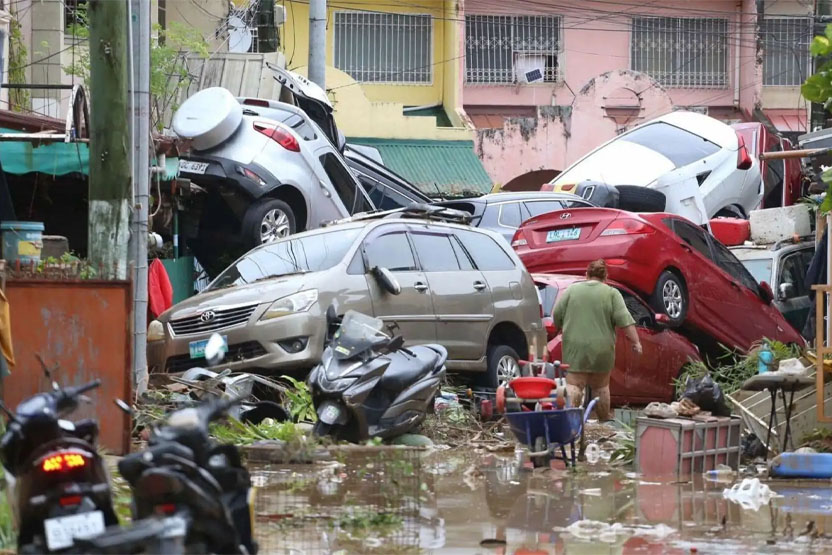
The Philippines is reeling from one of the most powerful tropical cyclones in its history, as Super Typhoon Fong-Wong tore through the archipelago, displacing more than 1.5 million people and prompting the government to declare a “national disaster”. The storm, whose winds exceeded 230 kilometers per hour, swept across much of the country, unleashing catastrophic flooding, landslides, and waves towering over 10 meters high.
Across social media, haunting videos captured scenes of chaos: homes engulfed by floods, vehicles overturned by violent gusts, and families wading through waist-deep waters. In the northern provinces, at least 132 villages were completely submerged, and authorities reported that more than 318,000 people remain in evacuation centers. Schools and government offices have closed, air travel has been paralyzed with 400 flights canceled, and seven major airports have suspended operations.
The Philippine Atmospheric, Geophysical and Astronomical Services Administration (PAGASA) described the typhoon’s structure as “exceptionally wide,” with a 700-kilometer-wide band of influence stretching across nearly two-thirds of the country. The storm is now weakening as it heads toward Taiwan, but meteorologists warn that its slow movement could prolong the devastation.
In Pandan, Catanduanes, one of the hardest-hit areas, floodwaters reached rooftops, leaving only antennas and treetops visible. Emergency teams are still assessing the extent of the destruction, while more than 6,000 shelters have been opened nationwide to accommodate nearly 100,000 displaced families.
Authorities have confirmed at least eight deaths, but rescue operations continue under perilous conditions, and the toll is expected to rise. The storm comes just days after Typhoon Kalmaegi, which killed 224 people and left 135 missing before crossing into Vietnam.
Scientists say the back-to-back disasters may be a warning of what’s to come. Rising ocean temperatures, driven by global warming, are fueling stronger and wetter storms. As oceans warm, hurricanes and typhoons gain both energy and moisture, leading to more intense rainfall and higher wind speeds.
Environmental experts warn that such “super typhoons” are no longer rare anomalies but may soon become the new normal in a rapidly warming world. On social media, many users voiced the same question: Have we entered the era of the mega-storm?
For now, the Philippines remains battered and anxious — a frontline witness to a climate reality that grows more violent with every passing year.


Comment